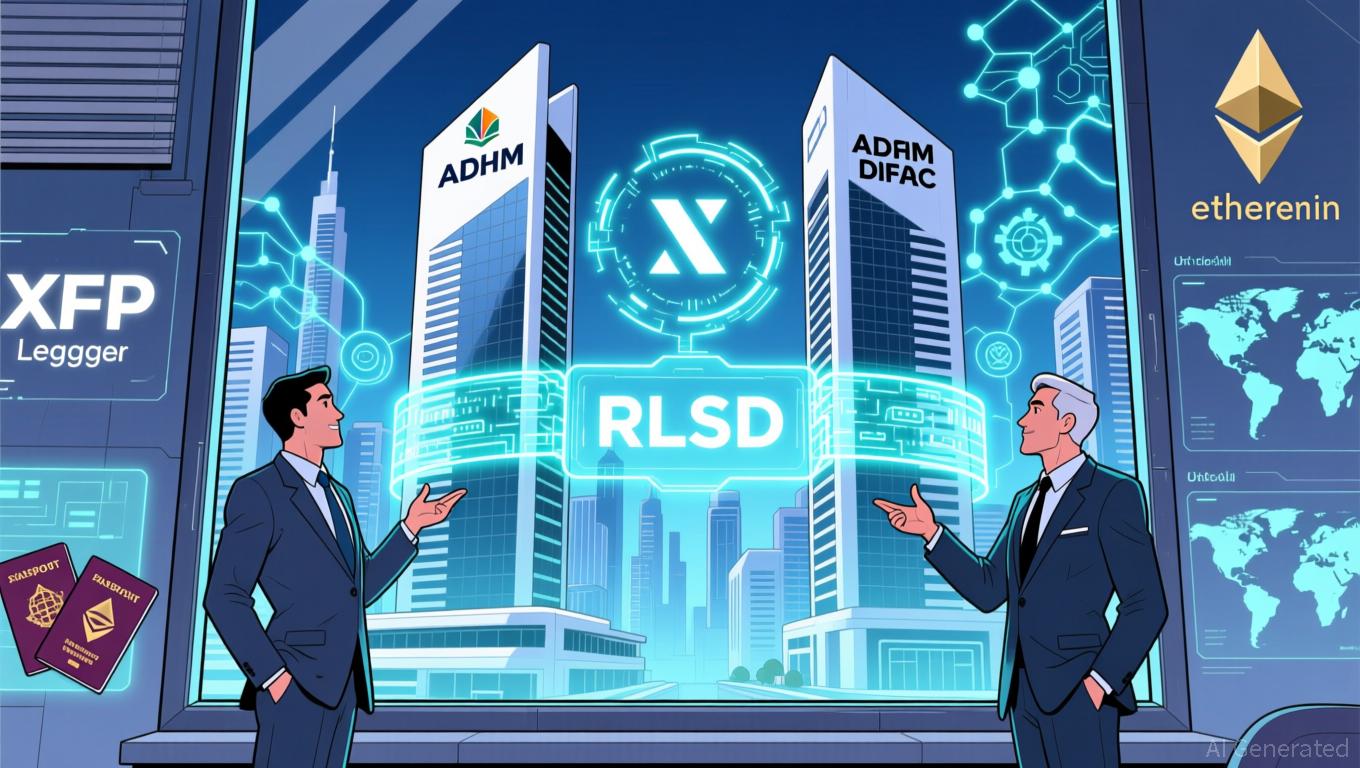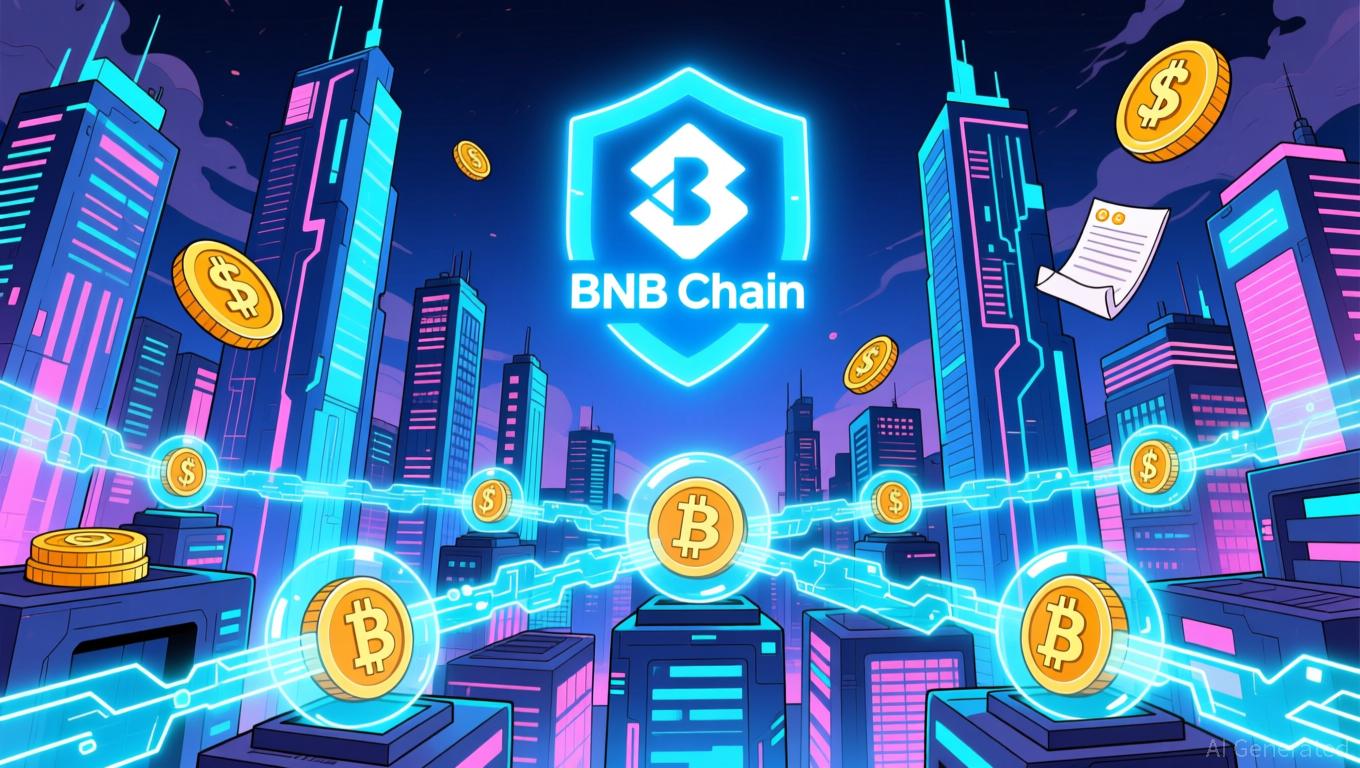Exploring New Challenges in Cryptocurrency Portfolio Management
- 2025 crypto landscape balances innovation with rising token scams, driving stricter regulatory enforcement and operational safeguards. - DOJ/SEC actions against fraudsters like Roger Ver and ByBit hackers, plus UK FCA sandboxes, highlight global accountability trends. - Blockchain analytics tools (TRM Labs, Chainalysis) enable real-time AML/KYC compliance and $2.17B+ stolen fund recovery through AI-driven monitoring. - FINRA/Georgetown and university programs build crypto literacy, while Kryptosphere-Del
Regulatory Enforcement: Strengthening Responsibility
Regulators have ramped up their scrutiny of crypto asset management in light of notable token fraud incidents. In the US, the Department of Justice (DOJ) and Securities and Exchange Commission (SEC) have taken firm measures against those engaged in illicit conduct. For example, the DOJ reached a deferred prosecution deal with Roger Ver, a
The SEC’s no-action letters have also brought more certainty to the industry.
Operational Safeguards: The Role of Blockchain Analytics
Blockchain analytics now form the backbone of contemporary crypto risk controls. Tools from companies like TRM Labs, Chainalysis, and CipherTrace are essential for
Innovative frameworks from Elliptic and the Wolfsberg Group further strengthen these capabilities. Elliptic’s 2025 analysis points to the use of graph neural networks to spot fraudulent wallets in dynamic transaction webs, while the Wolfsberg Group highlights AI-based systems for identifying new forms of illicit behavior
Education and Financial Literacy: Empowering the Industry
With the crypto industry’s growth, educational programs have become a cornerstone of risk reduction.
These initiatives go beyond theoretical learning. Groups like Kryptosphere, present in more than 26 educational institutions,
Case Studies: Frameworks in Practice
Real-world adoption of risk management systems after token fraud incidents provides tangible examples of institutional adaptation. Elliptic’s research highlights cross-chain risk monitoring to address scams like pig butchering and deepfake authorizations,
In Switzerland, where banks must comply with strict EU 5AMLD and FINMA standards, blockchain data analysis is now routine.
Conclusion: Integrating Risk Management Approaches
The integration of regulatory action, blockchain analytics, and educational progress is reshaping how crypto assets are managed. Although token fraud remains a challenge, the industry’s response—through tighter oversight, sophisticated compliance solutions, and a more knowledgeable workforce—shows a strong commitment to resilience. For those investing in crypto, the takeaway is clear: thriving in this space requires not only technical know-how but also a thorough understanding of the regulatory and operational foundations that support the market. As the sector advances, those who emphasize these protections will be best equipped to handle future risks and seize new opportunities.
Disclaimer: The content of this article solely reflects the author's opinion and does not represent the platform in any capacity. This article is not intended to serve as a reference for making investment decisions.
You may also like
Bitcoin Updates: Bitcoin Receives Major-Cap Status as Nasdaq Increases Options Limits Fourfold
- Nasdaq seeks SEC approval to quadruple IBIT options limits from 250,000 to 1 million contracts, aligning Bitcoin ETF with high-liquidity assets like EEM and GLD . - The proposal cites IBIT's $86.2B market cap, 44.6M daily shares traded, and industry support for addressing institutional demand amid Bitcoin's rapid financial instrument maturation. - Experts argue higher limits will reduce spreads, enable sophisticated hedging, and treat Bitcoin as a "mega-cap asset," while Nasdaq also seeks unlimited FLEX

XRP Update: ADGM's Green Light for RLUSD Strengthens UAE's Pursuit of Digital Financial Growth
- Ripple's RLUSD stablecoin secured ADGM approval as an institutional fiat-backed token in November 2025, following DIFC's June 2025 greenlight. - The UAE's dual regulatory endorsements position RLUSD for cross-border settlements, with $1.2B market cap driven by institutional demand for collateral and treasury tools. - ADGM's stringent oversight framework requires full reserve backing and AML compliance, aligning RLUSD with global standards under NYDFS charter . - XRP prices surged 24% in late 2025 amid $1

Bitcoin Updates: SpaceX Strengthens Bitcoin Holdings as Institutions Adjust Portfolios
- SpaceX transfers 1,163 BTC ($105M) to new wallets, increasing total holdings to 6,095 BTC ($556.7M) amid Bitcoin's rebound above $91,300. - Institutional Bitcoin interest grows as ETFs see $2.6B outflows, contrasting with SpaceX's secure custody strategy mirroring Tesla's $1.05B BTC treasury management. - Analysts view the activity as routine security adjustments rather than liquidation, highlighting corporate Bitcoin adoption focused on treasury diversification over speculation. - Market debates persist

BNB News Today: Real-World Assets Connect Conventional Finance with Blockchain, Opening Up Fresh Liquidity Opportunities
- RWA platforms like Lista DAO and Ondo Finance are accelerating blockchain integration of real-world assets, bridging traditional finance with on-chain opportunities. - Lista DAO's BNB Chain product offers USDT holders yields from U.S. Treasuries and AAA bonds, while Ondo Finance diversifies its fund reserves with $25M in YLDS stablecoin. - Nano Labs' NBNB Program aims to tokenize equities, bonds, and real estate on BNB Chain, emphasizing compliance and regulatory alignment for institutional-grade RWA pro
